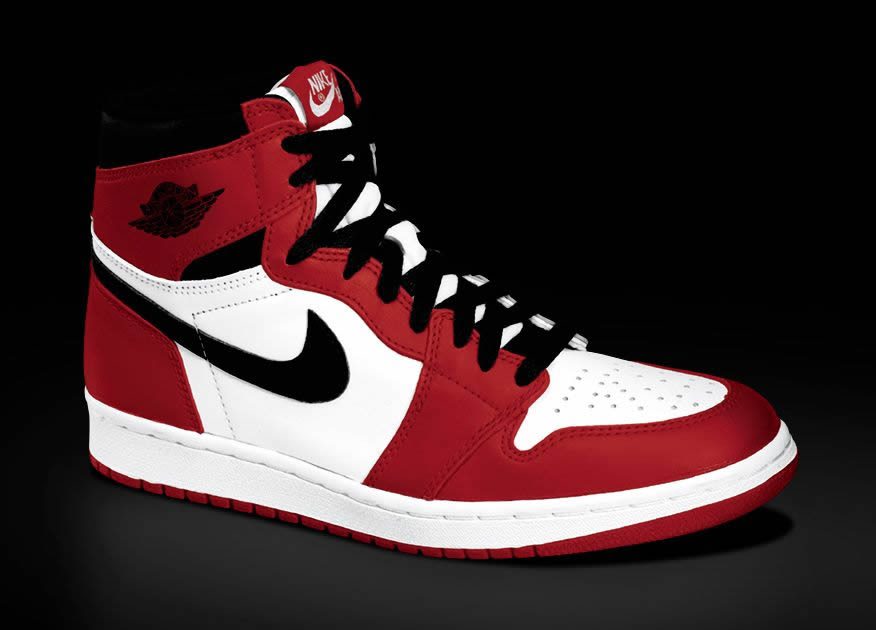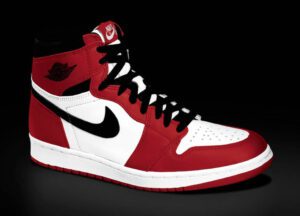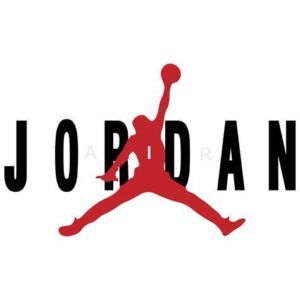Introduction
In the world of athletic footwear, few brands can match the popularity and influence of Nike. The American sportswear giant has dominated the market for decades, with its iconic Jordan shoes being a testament to its marketing prowess. While many companies have tried to compete with Nike, one brand that couldn’t quite match its success in marketing Jordan shoes is Spot-Bilt. In this article, we explore the reasons behind Spot-Bilt’s struggle and examine the factors that have contributed to Nike’s marketing triumph.
The Rise of Nike and Jordan Shoes
Nike’s journey to becoming a global sports powerhouse began in 1964 when Bill Bowerman and Phil Knight founded Blue Ribbon Sports, which eventually became Nike[1]. Over the years, Nike established itself as a brand synonymous with athletic excellence, capturing the hearts of athletes and consumers worldwide. In 1984, Nike made a significant move by signing a rookie basketball player named Michael Jordan[2]. This partnership led to the creation of the legendary Air Jordan line, revolutionizing the sneaker industry and setting the stage for Nike’s unparalleled success. Michael Jordan signed a five-year, US$2.5 million deal with Nike[3], three times more than any other deal in the National Basketball Association (NBA) at the time .
Spot-Bilt’s Attempt to Compete
Spot-Bilt, a lesser-known brand in the sports footwear industry, recognized the immense popularity of Jordan shoes and saw an opportunity to compete. With ambitious plans and a dedicated team, Spot-Bilt aimed to carve a niche for itself in the market. However, despite its efforts, Spot-Bilt struggled to replicate Nike’s marketing success.
Factors Contributing to Nike’s Marketing Success
Nike’s triumph in marketing Jordan shoes can be attributed to several key factors that have set it apart from its competitors.
1. Branding and Storytelling
Nike’s ability to craft compelling stories[4] around its products has been instrumental in captivating consumers. The Air Jordan line, for instance, embodies the essence of Michael Jordan’s greatness on the basketball court and tells a story of perseverance, excellence, and triumph. Nike’s branding expertise[5] has allowed them to create an emotional connection[6] with consumers, turning sneakers into cultural icons. Nike’s core narrative revolves around the pursuit of excellence and personal growth through sports. Nike’s storytelling[7] prowess is evident in numerous marketing campaigns that have captured the world’s imagination, such as the enduring “Just Do It” [8] slogan.
2. Celebrity Endorsements
The endorsement of high-profile athletes[9] has been a cornerstone of Nike’s marketing strategy. Michael Jordan has made over $1 billion from Nike[10], making it the richest athlete endorsement[11] deal ever . By associating its brand with sports legends like Michael Jordan, Nike has created a powerful image of superiority and success. These endorsements with celebritities[12] not only enhance the brand’s credibility but also inspire consumers to emulate their sporting idols.
3. Innovative Product Design and Technology
Nike’s commitment to innovation[13] has consistently pushed the boundaries of athletic footwear. Nike uses design parameters and innovative thinking[14] to progress sports forward at the most elite level. Nike has incorporated the concept of virtual reality in designing its shoes, using 3D digital technology[15]. And focus on Consumer Experience[16] help Nike stay creative and innovative. One may also argue, looking at the history and work ethic of Nike, it might emerge as the next Big tech giant[17]. The Jordan shoes, with their groundbreaking designs and advanced technologies, have become synonymous with performance and style. Nike’s relentless pursuit of innovation has kept them ahead of the competition and solidified their position as the industry leader.
4. Strategic Partnerships and Collaborations
Nike has strategically formed partnerships and collaborations[18] to extend its reach and appeal. Collaborations[19] with renowned designers, artists, and cultural icons have allowed Nike to tap into new markets and create limited-edition releases that generate significant buzz. These partnerships have further elevated the desirability and exclusivity of Jordan shoes. Nike has partnered with organizations such as the Sustainable Apparel Coalition[20], the Fair Labor Association[21], and Better Work to create change and improve working conditions in factories around the world.
Spot-Bilt’s Marketing Challenges
While Spot-Bilt attempted to challenge Nike’s dominance in the market, it faced several hurdles that hindered its success.
1. Limited Brand Recognition
Spot-Bilt faced significant challenges in its attempt to challenge Nike’s dominance[22] in the market. One of the major hurdles was limited brand recognition. Unlike Nike, Spot-Bilt struggled to establish a strong and recognizable brand identity. Despite offering quality footwear, Spot-Bilt failed to resonate with consumers on a deep level. This lack of awareness and connection with consumers made it difficult for Spot-Bilt to effectively compete in the highly competitive sneaker market. The strong brand presence and loyalty enjoyed by Nike posed a significant barrier for Spot-Bilt’s success. Spot-Bilt was an American company founded in 1898 that served as a subsidiary of Hyde Athletic, a men’s sportswear brand. Despite offering quality footwear[23], Spot-Bilt struggled to establish a strong and recognizable brand identity and failed to resonate with consumers on a deep level . This lack of awareness[24] and connection with consumers made it difficult for Spot-Bilt to effectively compete in the highly competitive sneaker market .
2. Lack of Celebrity Endorsements
Another challenge that Spot-Bilt[25] faced was its inability to secure high-profile athlete endorsements, unlike Nike. The absence of endorsements from influential sports figures proved to be a significant setback for Spot-Bilt [view sspot built previous shoes designs(26)]. These endorsements play a crucial role in capturing the attention and loyalty of consumers. By not having the support of renowned athletes, Spot-Bilt struggled to establish the credibility and relevance[27] needed to compete effectively in the market. The association with popular sports figures helps create a positive brand image and instills confidence in consumers, which Spot-Bilt was unable to achieve.
3. Less Innovative Product Offerings
Spot-Bilt’s product line[28] suffered from a lack of innovation and cutting-edge technologies[29], unlike Nike’s highly popular Jordan shoes. In a market where constant innovation[30] is key, Spot-Bilt failed to introduce compelling features and designs that could captivate consumers and set it apart from its competitors. The absence of unique selling points and innovative advancements limited Spot-Bilt’s ability to attract customers who sought the latest and most advanced footwear options. As a result, Spot-Bilt struggled to gain a competitive edge and establish itself as a frontrunner in the industry. For example, Nike’s Flywire technology[31] uses high-strength threads to provide support and stability while reducing weight. In contrast, Spot-Bilt’s product offerings were less innovative and failed to capture consumers’ attention.
4. Limited Retail Distribution
Spot-Bilt faced the challenge of limited retail distribution[32], which set it apart from Nike’s extensive network of availability. Unlike Nike, whose products could be found in numerous channels and locations, Spot-Bilt had a narrower distribution network[33]. This limited accessibility meant that potential customers had fewer opportunities to discover and purchase Spot-Bilt products, ultimately hindering the brand’s growth and reducing its market reach. Without a widespread presence in retail outlets[34], Spot-Bilt struggled to attract and engage a larger customer base, impeding its ability to compete effectively in the market.
Conclusion
Spot-Bilt faced significant challenges in competing with Nike’s marketing prowess and the enduring popularity of Jordan shoes. The brand struggled to match Nike’s success due to various factors, including limited brand recognition, the absence of celebrity endorsements, less innovative product offerings, and limited retail distribution. However, Spot-Bilt can use these challenges as learning opportunities to regroup and redefine its strategies. By focusing on enhancing brand recognition, securing influential endorsements, introducing innovative products, and expanding retail distribution, Spot-Bilt can strengthen its competitive edge in the market and position itself for greater success.
FAQs
Q: Can Spot-Bilt ever catch up to Nike in terms of marketing Jordan shoes? A: While it’s challenging, Spot-Bilt can improve its marketing efforts by focusing on brand building, innovation, and securing influential endorsements.
Q: What are the key factors that contributed to Nike’s success in marketing Jordan shoes? A: Nike’s success can be attributed to branding, storytelling, celebrity endorsements, innovative product design, and strategic partnerships.
Q: Did Spot-Bilt have any notable successes in the sneaker market? A: Spot-Bilt did have some successes, but they were overshadowed by Nike’s dominant presence in the market.
Q: How can Spot-Bilt differentiate itself from Nike and other competitors? A: Spot-Bilt can differentiate itself by focusing on unique product features, targeted marketing strategies, and building a strong brand identity.
Q: Is it possible for another brand to surpass Nike’s marketing success in the sneaker industry? A: While challenging, it is possible for another brand to achieve marketing success by employing innovative strategies and capturing consumers’ imagination.
More References
According to an article by NBC Sports Chicago, Spot-Bilt nearly landed Michael Jordan sneaker endorsement over Nike. However, they couldn’t match Nike’s marketing and couldn’t promise Jordan’s agent that they would market Michael the way that Nike would, which ultimately put the deal over the top financially for Nike. Nike has a very effective marketing strategy that includes building brand awareness and expanding globally. They use a variety of tactics such as social values and the swoosh to build brand awareness and expand globally.




